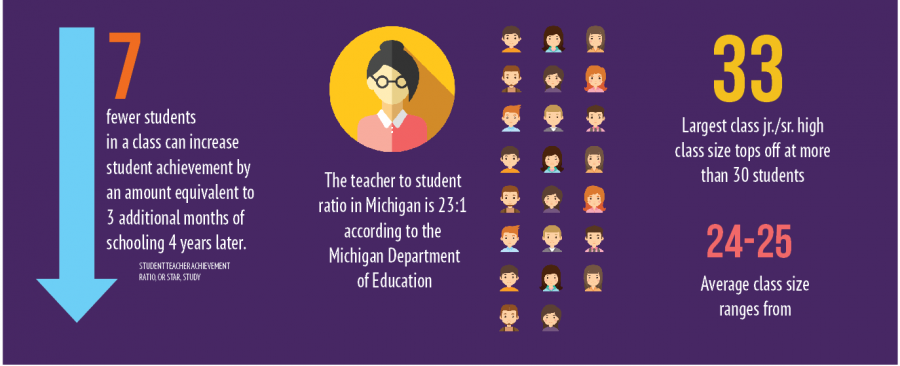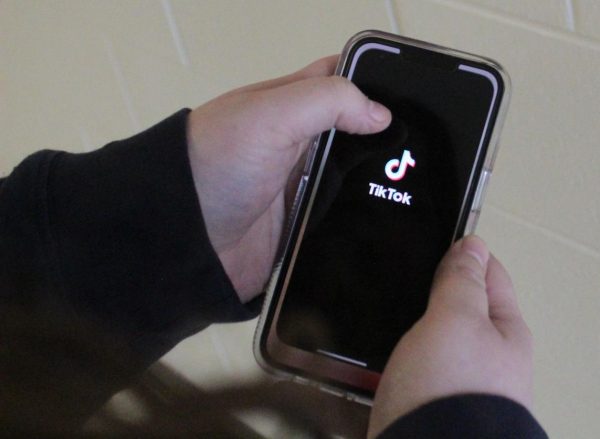Student body shrinking, class size increasing
Veteran English teacher Pam Gower teaches classes that are filled to the brim. She tag teams her biggest class with special education teacher Julie Shotwell, but her first block, freshman English, she instructs all alone, working with 30 students as one teacher.
“I have a hard time getting to helping all students,” Gower said. “Sometimes students will need longer periods of time with me to sit with them to work on something.”
Gower also has struggles to keep all students behaved while focusing on giving helpful and constructive comments on drafts and assignments when she simply doesn’t have the time.
“Evaluating work, responding to papers, getting through book conferences,” all add to Gower lists. “Having that many at once is just a lot to do it authentically,” she said. She is not the only teacher struggling, however.
The student body continues to shrink while class sizes grow. Grade levels average 100 students at Stockbridge which houses 599 students in 7th to 12th grade.
Schools with small student bodies lose money given by the state per pupil and have to reduce the amount of teachers to avoid running out of money.
Both parties are affected by this equation: Students have cramped classes stuffed to the brim with as many students as schedulers can get in.
Teachers have larger class sizes which makes for a difficulty in teaching all of the students they now have in their classes.
The teacher to student ratio in Michigan is 23:1, according to Michigan’s department of education. Most classrooms, however, have a range of upper twenties to thirties. Teaching this many young minds is no easy feat.
Jr./Sr. high classes have an average size of 24 to 25, with 33 at the top.
Enrollment in Michigan’s public schools has been dropping, causing schools to lose funding, this causes class sizes to grow. One reason for this is birth rate. MLive found, “While Michigan’s overall population has been increased from 7.8 million in 1960 to about 10 million now, the number of births has dropped substantially.”
Specialty classes are another contributor to this growing problem, specifically, classes where teachers select students for their class. These typically run with students as well as a sense of trust in those few students that they are responsible enough for the class.
On top of all that, online classes are on the rise. Why take a class in person when online classes are, for the most part, self paced?
And, then, there are the cost savings.
“Increasing the pupil/teacher ratio in the U.S. by one student would save at least $12 billion per year in teacher salary costs alone, which is roughly equivalent to the outlays of Title I of the Elementary and Secondary Education Act, the federal government’s largest single K-12 education program,” wrote Grover J. “Russ” Whitehurst, a former senior fellow in the Center on Children and Families in the Economic Studies program at the Brookings Institution and Matthew M. Chingos Director of the Education Policy Program at the Urban Institute.
However, the benefit may not outway the negatives.
“The evidence that smaller class sizes increase student achievement, particularly for African-American and low-income students, is irrefutable,” says NEA research analyst Kathy Tuck.
For a class to achieve, it needs to pay attention and behave. For Gower to keep 30 plus students on task, it is difficult.
“It’s almost like you put out one fire, and another fire starts,” Gower said.








